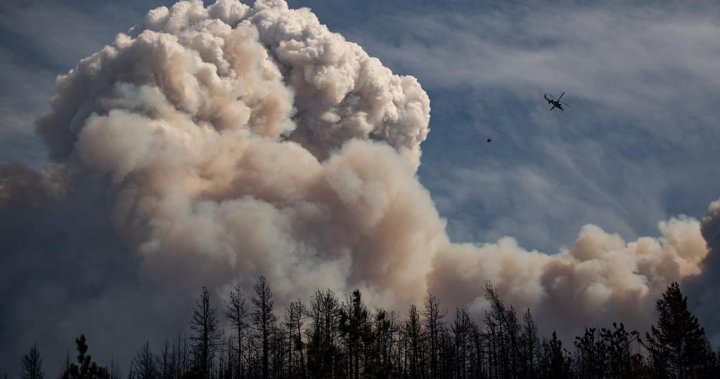A new study published in Communications Earth and Environment suggests that the deadly heat dome that affected the Pacific Northwest in 2021 was made worse by climate change. Researchers found that the heat dome was 34% larger and lasted 59% longer than it would have without global warming. This extreme heat event led to wildfires that consumed up to one-third of the total area burned in North America that year. The study also noted that the 2021 heat dome was 36% stronger and almost 40% larger than the next largest event of its kind in 2003. This trend of more intense heat events is a cause for concern as it may become a model for future summers.
The 2021 heat dome lasted 27 days and was responsible for hundreds of deaths in Canada and the United States, including over 600 deaths in British Columbia alone. The town of Lytton, B.C., recorded Canada’s highest-ever temperature of 49.6 degrees Celsius before being completely destroyed by a wildfire. The impact of the heat dome was also felt in areas outside its direct influence, with cities like Seattle and Portland breaking temperature records. The severe heatwave contributed to an intense wildfire season, with 3.2 million hectares burning across North America in July 2021 alone.
The spread of smoke from the wildfires reached as far east as New Brunswick and New York City, highlighting the far-reaching consequences of these extreme events. The study found that a significant portion of the land burned in North America in 2021 was directly linked to the fires that ignited during or shortly after the heat dome. The strain on firefighting resources during this time was evident, with both Canada and the U.S. facing prolonged periods of high emergency preparedness levels.
As climate change continues to worsen extreme weather events, the issue of limited firefighting resources becomes more pressing. The study emphasizes that under a warming climate, the constraints on firefighting resources may increase, making it more challenging to effectively combat wildfires. The research builds on a method developed by the lead author to track extreme weather events over time. By connecting the dots between extreme events and climate change, the study aims to inform policy decisions and increase public understanding of the direct link between a warming climate and the increasing risk of extreme weather events.
The study underscores the importance of ongoing research to better understand how climate change contributes to extreme events like heatwaves and wildfires. By compiling information on the processes that drive these events, scientists can provide a more holistic view of the impacts of climate change. The lead author emphasizes the need to continue communicating the connection between extreme events and climate change to build a greater understanding in society. Ultimately, the findings of the study highlight the urgent need to address climate change and its role in intensifying extreme weather events, with implications for future summers and fire seasons.


